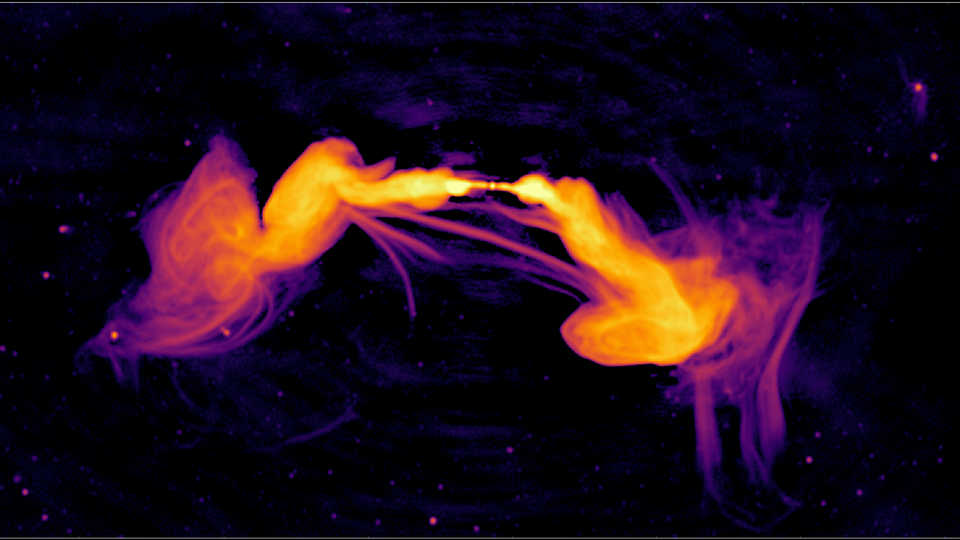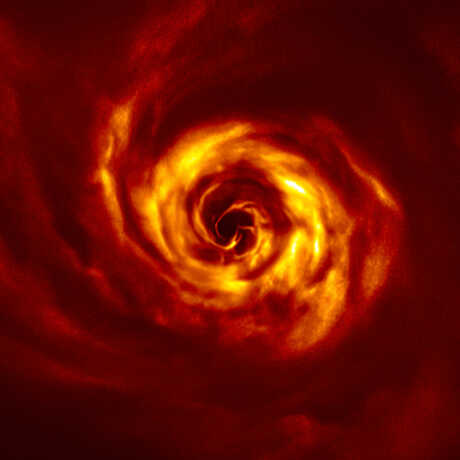Ryan Wyatt assumed his role as Senior Director of Morrison Planetarium and Science Visualization at the California Academy of Sciences in April 2007. He has written and directed the Academy’s six award-winning fulldome video planetarium programs: Fragile Planet (2008), Life: A Cosmic Story (2010), Earthquake (2012), Habitat Earth (2015), Incoming! (2016), and Expedition Reef (2018). All six shows are science documentaries that rely on visualization to tell their stories, but topics range from astronomy to geology, ecosystem science, and conservation. Trained as an astronomer, Wyatt has worked in the planetarium field since 1991; prior to arriving in San Francisco, he worked for six years as Science Visualizer at the American Museum of Natural History in New York City. Wyatt is cofounder and vice president of Immersive Media Entertainment, Research, Science, and Art (IMERSA), a professional organization dedicated to advancing the art and technology of immersive digital experiences. He served as co-chair of the 2019 Gordon Research Conference on Visualization in Science and Education (GRC/VSE), and served as the vice co-chair of the 2017 GRC/VSE.
Universe Update
Thoughts from a Planetarian: Universe Update for April 2020

This image from the MeerKAT radio telescope shows bright lobes of energetic gas emitted by an active galaxy—with surprising filamentary features connecting them!
The third Thursday of every month, Morrison Planetarium hosts “Universe Update” as its 6:30 planetarium show during NightLife—but with the California Academy of Sciences currently closed, that didn’t happen last night, so I had the chance to share a similar program at this morning’s Academy Breakfast Club! (You can watch the recorded presentation on YouTube.) I also decided to provide these notes on some of my favorite astronomy stories from the past month.
Normally, I take NightLife audiences on a guided tour of the Universe while I’m sharing these astronomical highlights. You can enjoy a flatscreen (sigh, less impressive) version of this journey in the video linked above. But in brief, the planetarium sports a three-dimensional atlas of the Universe, which allows us to take audiences places virtually while talking about the latest astronomy news. It provides context to the remarkable discoveries astronomers are making on a daily basis. Because I always start at Earth and work my way out to cosmological distances, I’ll list the news stories in the same order—from closest to farthest from home.
The first story has to do with Earth’s magnetic field—starting very close to home! I didn’t get a chance to cover this story in this morning’s presentation, but it lays the conceptual groundwork for some of the other stories I talked about.
It turns out that scientists have some serious questions about when Earth initially developed a magnetic field, which is actually pretty crucial to understanding how life developed on our planet. We know that Earth had a magnetic field as of about 3.5 billion years ago (a pretty long time indeed), well after life had initially appeared on our planet. Some measurements of minerals in Australia, however, indicate Earth may have had a magnetic field much earlier—perhaps as early as 4.2 billion years ago, not long after our planet formed! But a recent announcement from researchers at the Massachusetts Institute of Technology suggests that the technique used to make that 4.2 billion year estimate might be a little off. In an attempt to replicate the results (always a good idea in science), they found that the zircon crystals that were used were not a good measure of the magnetic field strength in the region, so the question remains open as to when things really got going for Earth, magnetically speaking.
Earth’s magnetic field plays an important role, it turns out, in protecting us (and life in general) from intense radiation streaming from the Sun. The solar wind consists of a continuous barrage of charged particles (mostly protons and electrons) blasting Earth constantly—and sometimes quite ferociously in what we call solar storms. An open question in space physics (the study of the solar wind and other magnetospheric phenomena) is why the solar wind seems to be traveling faster than expected close to Earth. It turns out the solar wind that streams by our planet is 10 times hotter than a simple physics model would predict. Researchers this month announced that they had some ideas on how to fix that problem, a little complicated to go into here, but involving different populations of electrons with different energies and how they interact in the solar wind. If nothing else, this is a very promising lead in terms of figuring out this knotty problem.
As an aside, I should point out that the solar wind interacting with Earth’s magnetic field leads to one of the most visible and enjoyable space physics phenomena on Earth—the aurorae, or northern and southern lights. These rings of charged particles around Earth’s north and south poles are visible as curtains of glowing atoms, prompting travelers from around the world (at least in different times than our current shelter-in-place times) to visit these places and observe these spectacular phenomena. I wanted to mention this because it’ll come up later in our stories—it turns out that charged particles trapped in the atmosphere of a very different object are helping us make an unprecedented observation of a phenomenon outside our solar system.
Leaving Earth behind for a moment, and heading out toward a recently discovered object making its way closer to us, I have to share the unfortunate news of the demise of Comet C/2019Y4 ATLAS. The appearance of this comet late last year had people excited that we might be seeing an extremely bright comet in our skies late this spring. Predictions were a little over the top, suggesting that the comment might appear visible in the daytime! That’s awfully exciting, but it turns out… Won’t happen. Comet ATLAS has been observed closely by amateurs and professionals alike over the last few months (some of those observations coordinated by the SETI Institute here in the Bay Area), and it now appears that the comet’s nucleus has fragmented. This isn’t too surprising, since this visitor from the outer solar system, accustomed to the deep freeze far away from the Sun, is experiencing a lot of stress coming close to the light and heat of our parent star. Likely held together by ice and frozen material, the comet seems to have shattered when it heated up, resulting in small fragments that won’t make the grand appearance many people had hoped for in our skies over the next couple months. The good news? It seems that Comet SWAN might be another appealing candidate for a bright comet, so astronomers, professional and amateur alike, are pinning their hopes on this more recent discovery.
Another story I didn’t mention during my presentation is about the first interstellar visitor to our solar neighborhood, the cigar-shaped 1I/’Oumuamua. This object hasn’t been observed up close; however, we did deduce its elongated shape from its variable appearance in our skies, as well as the way it interacted with the solar wind. A team of astronomers has proposed a scenario by which ’Oumuamua formed, and that’s a pretty fascinating tale I didn’t have time for this morning.
Moving much farther out from the Sun, to the region of the Solar System where objects like Comet ATLAS formed… A research team recently announced the discovery of more than 100 new Kuiper Belt objects! These were observed by the DECam as part of the Dark Energy Survey, which is designed to search for objects much, much farther from home, but also does a great job of discovering these icy bodies at the edge of our solar system. This new collection of objects adds to a catalog of several thousand known Kuiper Belt objects, intriguing bodies that reveal how our solar system formed.
As we exit our solar system, I’ll briefly note the exciting discovery of several new exoplanets. Most notably, the recent announcement about an Earth-sized planet discovered in the habitable zone of its star—a discovery exhumed from the vast cache of data collected by the Kepler mission. Exciting stuff.
But I’ll focus more attention on a phenomenal observation of the atmosphere of the brown dwarf 2MASS J10475385+2124234 (um, 2MASS J1047+21 for short?) announced earlier this month—the first measurement of wind speed outside of our own solar system! Basically, by looking at emission from the upper atmosphere of 2MASS J1047+21 (in infrared wavelengths) and comparing it to emission from energize electrons in the brown dwarf’s magnetosphere (in radio wavelengths), researchers were able to determine the speed of winds circulating in the brown dwarf’s atmosphere. And they clocked winds at more than 2,300 kilometers per hour (nearly 1,500 miles per hour). That’s pretty intense stuff! Looking at the infrared images of the upper atmosphere alone tells us how fast the wind is traveling in combination with the rotation of the brown dwarf, so the radio observations (which effectively reveal the rotation of the magnetic core of the brown dwarf) can be used to remove the rotational component. Pretty spiffy, and a technique that can be applied to other objects outside the Solar System.
All the stories so far have taken place relatively close to home, in terms of describing phenomena inside our own Milky Way galaxy—the collection of hundreds of billions of stars (along with gas and dust and planets and us) in which we reside. But we know of many, many more galaxies, including extraordinarily active ones! Although the Milky Way galaxy has a supermassive black hole as its center, it’s relatively wimpy compared to the supermassive black holes in other galaxies. In a dramatic image of the uninspiringly named galaxy ESO 137-006 released from the MeerKAT collaboration, hot lobes of gas, observed in radio wavelengths, originate from the energetic black hole near the center of the image. And the lobes appear to have filamentary connections to one another—the strands of bright, nearly linear streaks below the center of the image—a pretty significant surprise! Perhaps this emission is coming from electrons spiraling along magnetic field lines (there we go with magnetic fields again), extending many light years through space. The MeerKAT observations are some of the most high resolution and detailed to date, so perhaps this phenomenon is more common than we might otherwise imagined. More observations at similar resolution will perhaps reveal more such amazing phenomena.
Finally, I’ll end with an interesting but likely controversial announcement from a group of astronomers looking at data from x-ray telescopes. They interpret their observations to indicate that the Universe, which we know to be expanding from its earliest origins in the Big Bang, is actually expanding at different rates in different directions. That comes as a pretty ginormous surprise for cosmologists, so the announcement was met with considerable suspicion (at least amongst cosmologists whom I follow on Facebook and Twitter, and even the official press release now includes an “added note discussing the possibility of systematic errors”). Perhaps we are seeing a limitation on the observational techniques? Or perhaps the Universe is much weirder than we thought.
That’s all for this month! Thanks for joining me for the April “Universe Update” at a virtual Morrison Planetarium.
About the Planetarian



